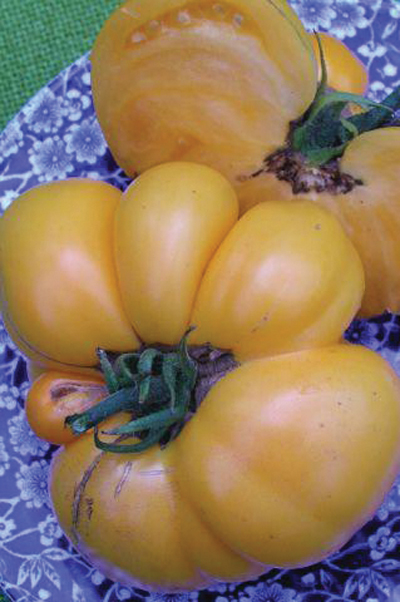
I was pleasantly surprised by plant sales this past spring, although I have to admit that they were much better than expected. Still, I learned that every business has the opportunity to either ignore or engage their economic reality, and that change can be as simple as reacting, adapting or diversifying to meet the current needs of the client and the business that serves them.
I was pleasantly surprised by plant sales this past spring, although I have to admit that they were much better than expected. Still, I learned that every business has the opportunity to either ignore or engage their economic reality, and that change can be as simple as reacting, adapting or diversifying to meet the current needs of the client and the business that serves them.
 |
|
 |
|
 |
|
 |
|
| Sales of some plants decreased this year, while others skyrocketed. They key is adapting to customer preferences. From top: Heavenly bamboo (Nandina domestica ‘Plum Passion’), Spiraea japonica ‘Goldflame’, Paeonia ‘Bowl of Beauty’ and Heirloom tomato ‘Azoychka’. Advertisement
|
Reacting
There was little good economic news in the spring of 2009 – in fact, every newspaper and television broadcast seemed to herald yet another bankrupt company or series of layoffs. Truth be told, I was one of those people bracing for some tough times ahead and in response I had cut my spring bookings by about 20 per cent overall.
But that doesn’t mean that I just rolled over and waited for the recession to pass. When the federal government announced their Home Renovation Tax Credit, we immediately contacted Revenue Canada to find out exactly what was included as far as garden-related products were concerned. It turned out that almost everything we sold was eligible, except for those items (ie. fertilizers) used to maintain an existing landscape. After learning this, we held a meeting with our garden designers to keep them informed and allow them to share this information with their customers, who are the end beneficiaries of this tax credit. We also started running print advertising to inform the public that plants and garden wares were just as eligible for this program as were interior home renovations.
So by reacting to tough economic times and changes to the tax system, many garden centres were able to give the public at large some much needed good news – becoming positive, inspiring places where people went to enjoy the beauty, buy a few plants and most importantly, destress.
Adapting
This past winter, the Lower Mainland of British Columbia experienced unusual below-freezing weather that persisted for several months. What was normally a rainy season with an occasional snowfall, turned into sheets of ice and several meters of snow. The effect on our ‘Lotus Land’ gardens was rather severe, with many marginally hardy trees and shrubs falling victim. Rosemary, bay laurel, California lilac (Ceanothus ‘Victoria’), hardy banana, windmill palm (Trachycarpus fortunei), heavenly bamboo and New Zealand flax (Phormium) were just a few of the plants that perished in the cold.
So by the time spring arrived, many nursery managers were wondering how the sales of these tender plants were going to fare. With the exception of the rosemary and bay laurel – which people wanted to replant regardless of their hardiness – the sales of tender plants fell into three distinct categories.
Some people were determined to replace all of their lost exotics, although they were less willing to purchase those expensive specimen sizes. Other gardeners wanted to replace a few of their favourite exotics, choosing to fill the balance with hardier species. Our last customer category had decided to turn their backs entirely on marginally hardy plants and made sure that all replacement plants were at least two zones hardier than necessary.
The key word here is adaptation: adapting to the change in weather patterns, adapting to plant losses, adapting to customer expectations and adapting to fluctuating plant inventories. By way of example, sales of bay laurel and rosemary skyrocketed to a point where it was difficult to keep up with demand. Similarly, sales of hardy shrubs and perennials such as spirea, dwarf lilac (Syringa ‘Miss Kim’), peonies and mockorange (Philadelphus) were so strong that local supplies quickly dwindled and those with inadequate stock on hand watched their customers go elsewhere for their purchases. At the other end of the scale, sales of exotics such as heavenly bamboo (Nandina) and hardy banana (Musa ‘Basjoo’) were very lackluster, leading to excess inventories.
Being willing and able to adapt to market changes, whatever they may be, is a critical survival tool in our ever-changing economy.
Diversifying
Personally, I don’t think it’s a good time to specialize in any one garden product (ie. pots, exotics, hedging cedars) during this current economic downturn – at least, if the opportunity to diversify is available. Having a little something on hand to appeal to all tastes is a great way to attract an incredibly diverse clientele with an ever-dwindling disposable income. Then again, maybe all we have to do is get back to the essentials, such as food. After all, most of us sell edibles in the form of fruit trees, berry shrubs, vegetables, seeds and vines – and if the sales of spring 2009 are any sort of indicator – edible plants are going to be good for business for some time to come.
So whether it’s a small potted African violet, an heirloom tomato or a specimen conifer, being able to offer a diverse inventory is a great way to hedge your bets and attract impulse sales. As simple as it sounds reacting, adapting and diversifying are time-honoured business practices that have allowed many garden centres and nurseries to thrive during tough economic times such as those we are facing today.
|
|||||||||||||||||||||
Print this page